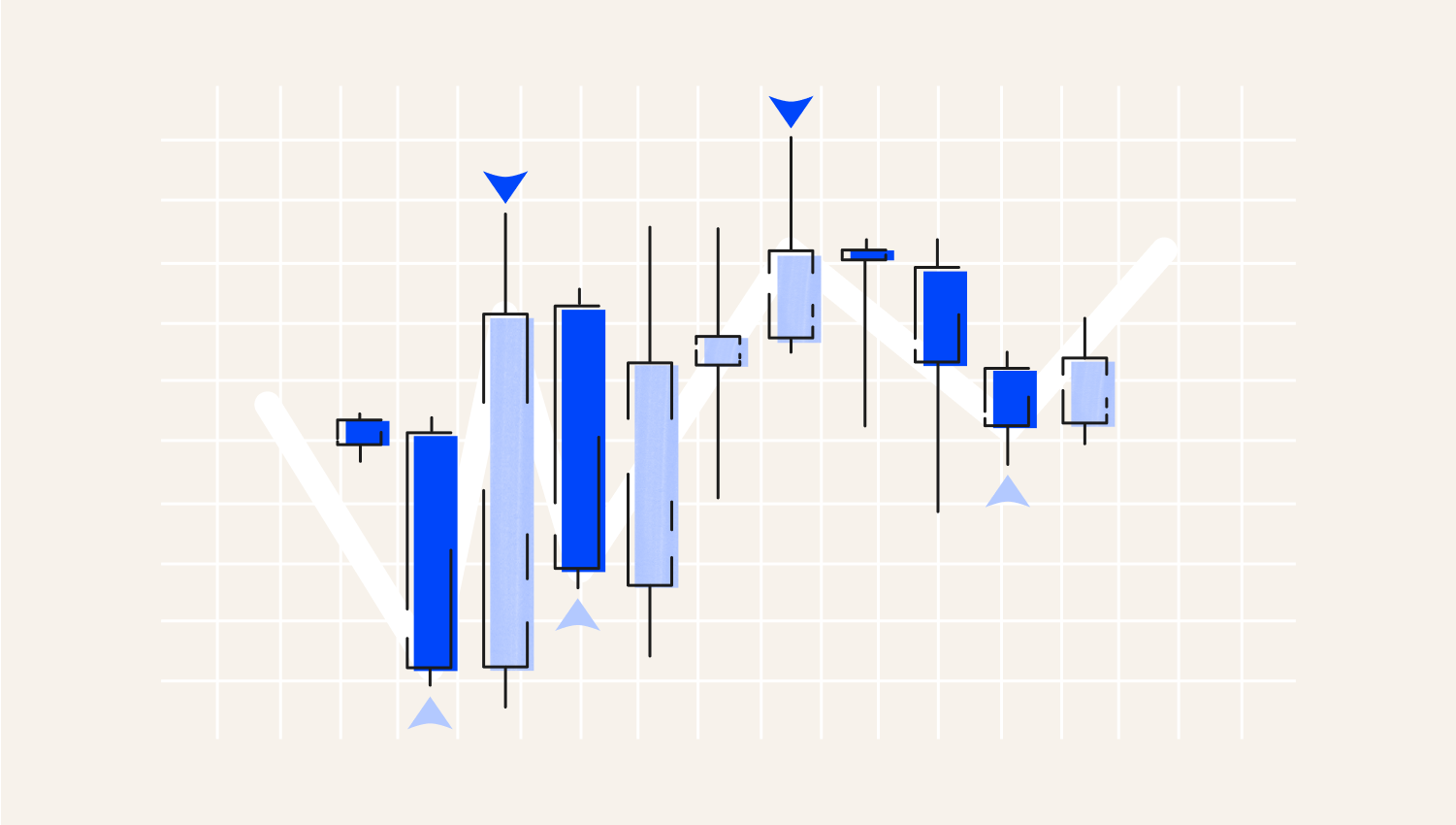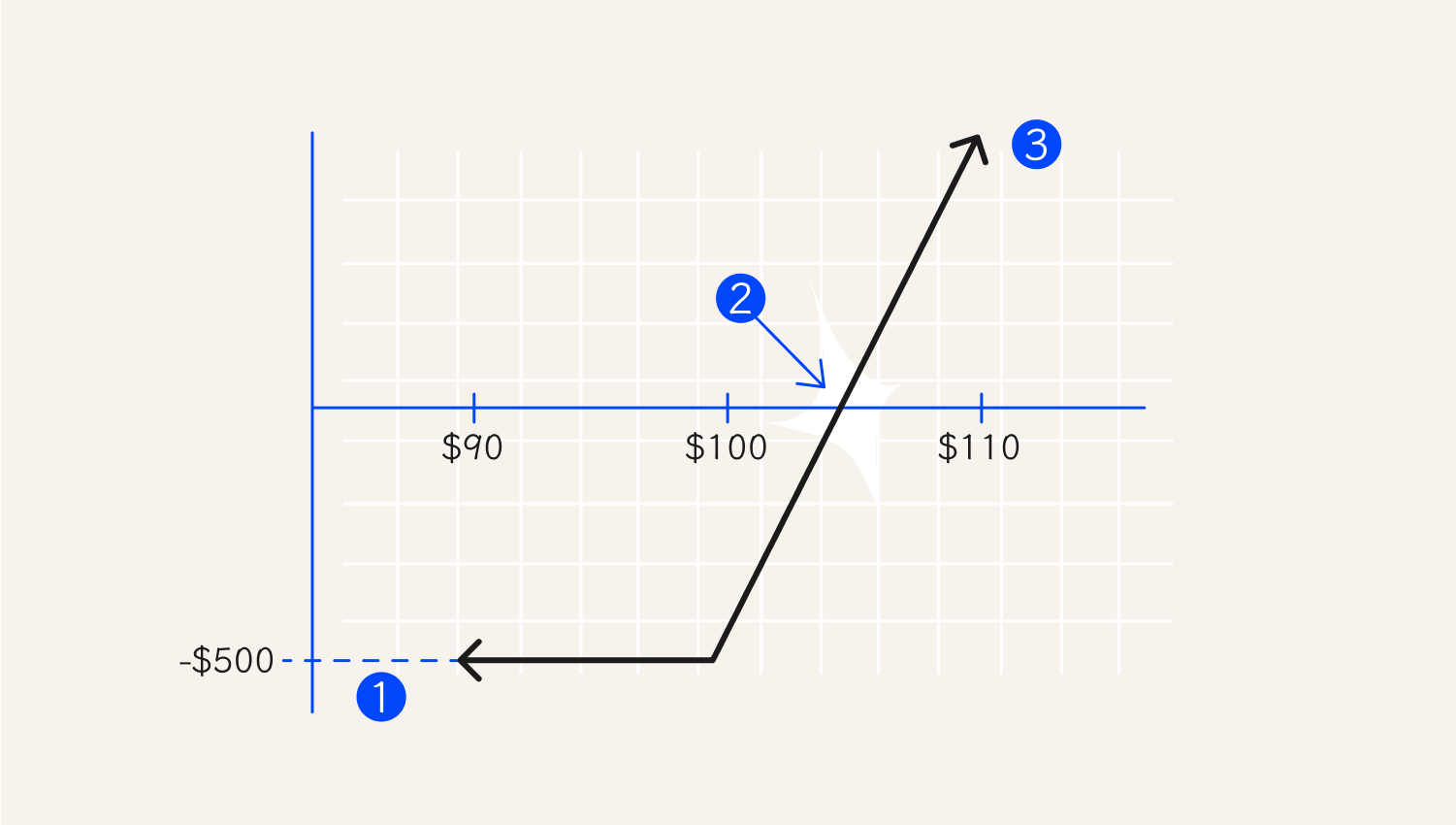买入看涨期权使投资者在资产价格上涨时获得利润,同时涉及的风险最小。在本文中,我们解释了买入看涨期权的基本原理、如何交易、它的优缺点,以及投资者如何利用这一工具提高收益。
看涨期权是一种金融合约,赋予持有者在特定期限内、按预先设定的行权价买入标的资产的权利(而非义务)。标的资产类型多样,可涵盖股票、大宗商品、债券、外汇、指数等。 与普通股票或股份不同,投资者在购买期权时只需支付较少的初始费用,而无需一次性支付全部金额。例如,若你想购买每股价格为50美元的100股股票,通常需要支付5000美元。 相比之下,买入看涨期权仅需支付标的资产价值的一小部分——即权利金。例如:若该股票看涨期权的权利金为每股2美元,则支付200美元即可获得以行权价买入100股的权利。 这笔初始资金将支付给看涨期权卖方。若买方选择行权,卖方有义务履行交割。这种策略被称为卖出看涨期权。另外,请注意,双方都可以选择终止合同。 买入看涨期权特指期权买方的持仓头寸。当投资者购买看涨期权时,即建立"多头"头寸。这是一种看涨策略,因为只有当标的资产价格超过行权价与权利金之和时,买方才能获利。什么是买入看涨期权?

买入看涨期权的关键组成部分包括: 与买入看涨期权相关的其他基本概念包括:买入看涨期权的关键组成部分
杠杆。 看涨期权的一大优势是它们允许投资者以较小的初始资本控制大额合同价值,因为通过杠杆可获取巨额利润。 有限风险。 看涨期权具有明确的风险收益比,有助于买方控制损失的可能性。 灵活性。 在期权交易中,投资者可以选择不同行权价和到期日。因此,投资者可以随时根据市场前景调整策略。 盈利潜力。 如果投资者做出正确的判断,尤其在标的资产价格大幅波动上涨时,投资者可能实现可观利润。优点
在某些情况下,期权合约可能导致买方损失全部权利金。 与其他资产(如货币)相比,期权收益与标的资产价格变动并非1:1对应。由于Delta值影响,标的资产每上涨1美元,期权可能仅增值0.7美元。 Delta是期权交易中的关键指标。表示标的资产(如股票)每变动1美元时期权价格的变化幅度,反映期权对价格波动的敏感度。 例如,如果看涨期权的 delta 为 0.2,而股票上涨 1 美元,期权价格大约上涨 0.20 美元。 Delta 是随着时间变化的。在期权的早期或远远未到价(标的资产的当前价格低于期权合约中约定的买入价格或高于卖出价格的情形)的情况下,Delta 往往较低,因为期权获利的机会较小。缺点
这里将分析买入看涨期权与其他交易策略的区别。 买入看涨期权与买入股票。 投资者建立买入看涨期权头寸所需的资本少于买入股票或股份。这降低了在合约不盈利情况下的风险。此外,进行股票市场交易或投资股票的投资者不像期权交易那样受时间限制。 买入看涨期权与卖出看涨期权。 卖出看涨期权是买入看涨期权的相反策略。在这种策略中,卖出看涨期权的投资者收取权利金,但有义务在买方行使期权时以行权价出售标的资产。这是一种看跌策略或中性策略,因为当标的资产价格低于行权价时,卖方就能获利。然而,如果资产价格显著上涨,风险可能是无限的,因为卖方可能需要以更高的市场价买入资产,再以较低的行权价卖出。买入看涨期权与其他策略
下面的图解说明了买入看涨期权。首先,投资者应注意,最大风险仅限于所支付的权利金,因此潜在的收益和利润空间是无限的。 其次,对于投资者而言,要获利,股票价格必须在到期时高于行权价。 在以下示例中,投资者以5美元/股的权利金买入行权价为100美元的看涨期权合约,最大亏损锁定为500美元(即全部权利金),只有当价格持续上涨时,才能获得无限的收益。需要理解的是,标的资产价格必须在到期时高于105美元,投资者才能获利。示例

1. 最大损失
2. 盈亏平衡点:$105
3. 最大利润是无限的
买入看涨期权适用于预期标的资产价格上涨时的投资布局。以下是有效运用此策略的方法:如何使用买入看涨期权

1. 利润
2. 行权价
a. 天数
b. 期权到期日
从小仓位开始。 如果您是期权交易的新手,明智的做法是从小仓位开始,这样可以帮助你逐步了解市场并积累经验。同时,要记住交易具有风险,不要投入你无法承受损失的资金。 使用技术分析。 多年来,投资者一直使用技术指标来识别潜在的买入和卖出时机。此外,在技术分析中,可以结合图表形态,如谐波和K线组合,以优化你的交易策略。 持续跟踪市场动态。 优秀的投资者会不断获取影响市场的基本面信息。因此,选择一些博客或频道,及时获取财报、消费者价格指数以及其他对你所投资资产有重大影响的关键数据。 构建多元化组合。 切勿将所有资金押注单一资产。构建投资组合是成功的关键,因为亏损头寸的损失可被其他盈利头寸所抵消。如何提高胜率
总结





